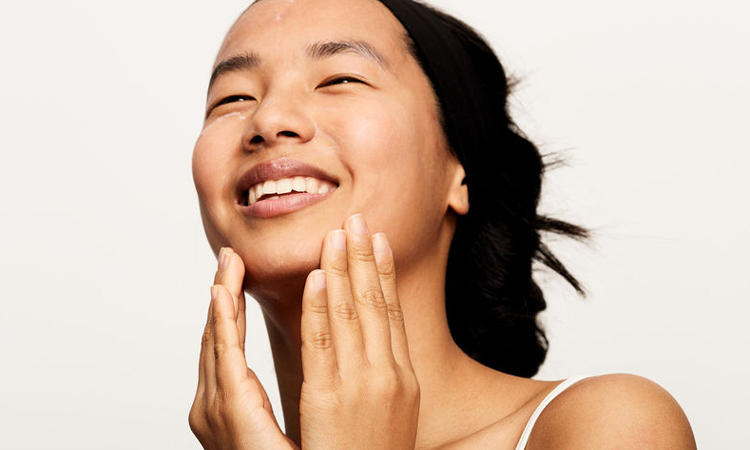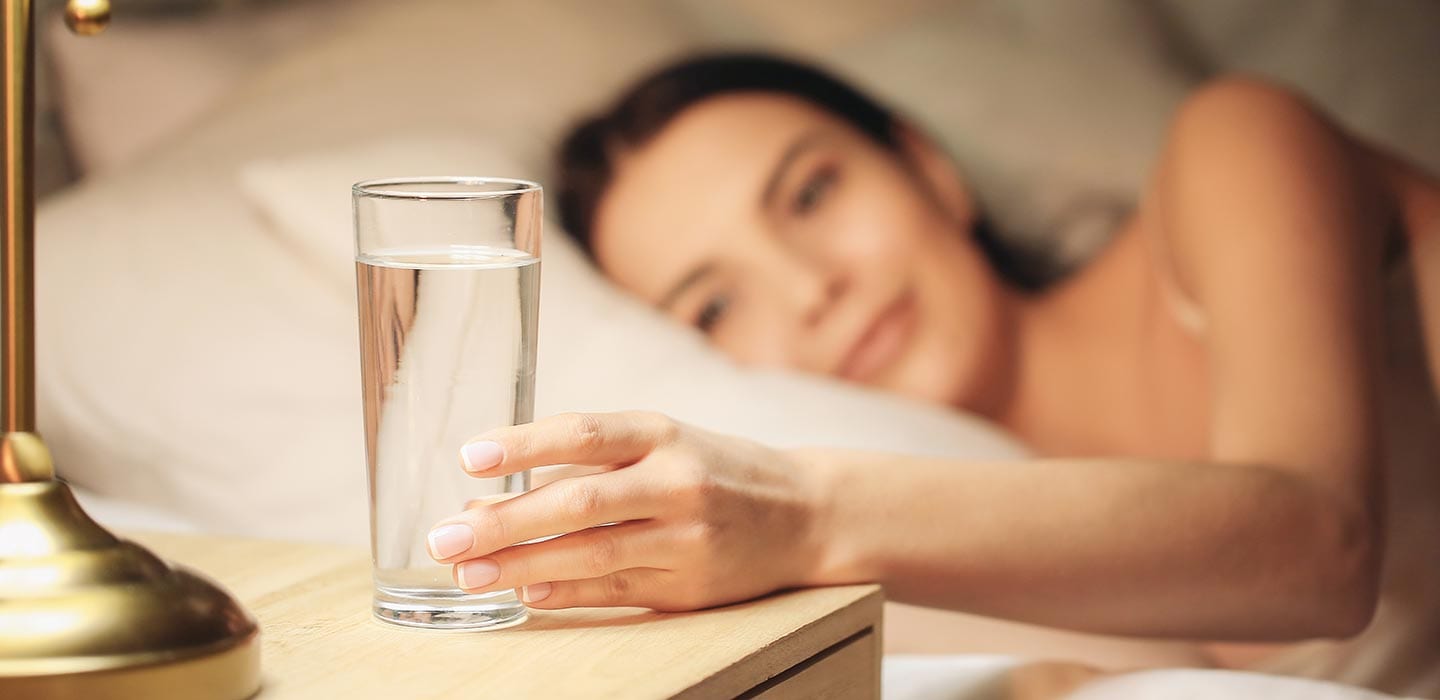
As an expert and trained esthetician, I understand the importance of building an effective skincare routine. With so many products and techniques available, it can be overwhelming for individuals to know where to start; how do you know you have constructed the best skincare routine possible?
Skin aging should be a focus of an overall health regimen. Your skin is the first sign of aging that gets noticed. fine lines and wrinkles are obvious. Also, bumps start growing everywhere. Are they skin tags, warts, or signs of sun damage and the start of something more serious than common skin complaints?
However, taking care of your skin doesn’t have to be complicated. By following a simple and consistent routine, individuals can achieve healthy and radiant skin. I will outline a step-by-step guide on how to build an effective skincare routine, including facial routines in the morning and evening, using the right products, nutritional guidance, seeking professional care, and emphasizing sleep and hydration.
1. Establishing an Effective Skincare Routine
Establishing a consistent skincare routine is the foundation for achieving healthy and radiant skin. Consistency is key in order to see results, so make sure to stick to your routine every day. Additionally, be patient and give your skin time to adjust to the new products and routines.

As we age, our skin undergoes changes such as decreased collagen production and slower cell turnover. Establishing a consistent skincare routine becomes even more important to combat these changes. It’s important as we get older to have a dermatologist once a year to review any new growth or change in color or size of a mole or skin abnormalities. With the yearly checks, there are some real-world routines you can establish to vastly improve your skin look and health.
Here is a common morning skincare routine for 40s that is not complicated, uses simple ingredients and can easily be practiced each morning.
- Cleanser: Start by washing your face with a gentle cleanser to remove any dirt or oil that may have accumulated overnight.
- Toner: Follow up with a toner to balance your skin’s pH levels and reduce the appearance of pores.
- Exfoliator: Once or twice a week, use a gentle exfoliator to remove dead skin cells and promote cell turnover. Massage the exfoliator onto damp skin in circular motions, avoiding the eye area. Rinse thoroughly with warm water.
- Serum: Apply a lightweight serum that addresses your specific skin concerns, such as fine lines or hyperpigmentation.
- Eye Cream: Apply a small amount of eye cream to the delicate skin around your eyes to hydrate and protect.
- Moisturizer: Finish off by applying a lightweight moisturizer to protect your skin from environmental stressors and prevent moisture loss throughout the day.
- Sunscreen: Lastly, don’t forget to apply sunscreen with at least SPF 30 to protect your skin from harmful UV rays.
For nighttime skincare routine try this.
- Cleanser: Start by removing any makeup or sunscreen using a gentle cleanser.
- Toner: Follow up with a toner to balance your skin’s pH levels.
- Exfoliator: Once or twice a week, use a gentle exfoliator to remove dead skin cells and promote cell turnover.
- Treatment: Apply any treatment products such as serums or spot treatments.
- Eye Cream: Apply a small amount of eye cream to the delicate skin around your eyes to hydrate and protect.
- Moisturizer: Finish off by applying a heavier moisturizer to help repair and restore your skin while you sleep.
Note: It’s important not to over-exfoliate your skin, as this can cause irritation and inflammation. Once or twice a week is typically sufficient for most skin types. Additionally, be gentle when applying an exfoliator and avoid using it on any areas of your skin that may be sensitive or inflamed.

2. Using the Right Skincare Products
Choosing the right products for your skin type can make a significant difference in the health and appearance of your skin. However, it’s important to remember that everyone’s skin is unique, and what works for one person may not work for another.
As we age, our skin becomes thinner and more delicate, so it’s important to choose products that are gentle and non-irritating. Look for products that are formulated for mature skin, and contain ingredients that promote hydration and collagen production.
Consider incorporating natural ingredients such as plant oils, which can help improve the skin’s elasticity and provide deep hydration. Additionally, look for products that contain antioxidants such as vitamins C and E, which protect the skin from free radical damage and promote a youthful glow.
Retinol is a type of vitamin A that is commonly used in skincare products to address a range of skin concerns such as fine lines, wrinkles, and hyperpigmentation. However, when using retinol for skincare over 40, it’s important to be aware of both the benefits and precautions.
Benefits:
- Reduces the appearance of fine lines and wrinkles: Retinol can help stimulate collagen production, which can improve the appearance of fine lines and wrinkles.
- Improves skin texture and tone: Retinol can help improve the overall texture and tone of the skin by promoting cell turnover and reducing the appearance of pores.
- Brightens the complexion: Retinol can help reduce the appearance of hyperpigmentation, such as age spots, and brighten the complexion.
- Helps prevent acne: Retinol can help regulate oil production, which can help prevent breakouts.
Precautions:
- Start slow: When using retinol for the first time, it’s important to start slow and gradually increase the frequency of use. This can help prevent irritation and dryness.
- Use at night: Retinol can make the skin more sensitive to the sun, so it’s important to use it at night and wear sunscreen during the day.
- Avoid other exfoliating products: When using retinol, it’s important to avoid other exfoliating products such as scrubs and acids, which can increase the risk of irritation.
- Moisturize: Retinol can be drying, so it’s important to moisturize regularly to help keep the skin hydrated.
- Be patient: Retinol can take several weeks to start showing results, so it’s important to be patient and consistent with use.
- Consult with a skincare professional: If you have sensitive skin or are unsure about using retinol, it’s important to consult with a skincare professional who can recommend the best products and regimen for your specific needs.

In conclusion, retinol can be a highly effective ingredient for addressing a range of skin concerns in those over 40. However, it’s important to take precautions such as starting slow, using at night, and moisturizing regularly to prevent irritation and dryness. Additionally, it’s important to be patient and consistent with use and to consult with a skincare professional if needed. With proper use and care, retinol can help achieve smoother, brighter, and more youthful-looking skin.
3. Nutritional Guidance
The foods we eat play a crucial role in our overall health and can have a significant impact on the health and appearance of our skin. Here are some foods that have been found to be beneficial for promoting better-looking and healthy skin, as well as some foods to avoid:
Foods to Eat:
- Fatty Fish: Fatty fish such as salmon, mackerel, and sardines are rich in omega-3 fatty acids, which can help reduce inflammation in the skin and improve overall skin health.
- Leafy Greens: Leafy greens such as spinach, kale, and collard greens are high in vitamins A and C, which can help promote collagen production and reduce the signs of aging.
- Berries: Berries such as blueberries, strawberries, and raspberries are high in antioxidants, which can help protect the skin from damage caused by free radicals and promote healthy aging.
- Avocado: Avocado is rich in healthy fats and vitamin E, which can help moisturize and nourish the skin from within.
- Nuts and Seeds: Nuts and seeds such as almonds, walnuts, and chia seeds are high in vitamin E and healthy fats, which can help improve skin texture and reduce the signs of aging.
Foods to Avoid:
- Processed Foods: Processed foods such as fast food, sugary snacks, and processed meats can be high in sugar, salt, and unhealthy fats, which can contribute to inflammation and damage to the skin.
- Sugary Drinks: Sugary drinks such as soda and energy drinks can be high in sugar, which can contribute to inflammation and damage to the skin.
- Dairy: Dairy products such as milk, cheese, and yogurt can be high in hormones that can contribute to acne and inflammation in the skin.
- Alcohol: Alcohol can dehydrate the skin, leading to dryness and wrinkles.
- High-Glycemic Foods: High-glycemic foods such as white bread, pasta, and potatoes can cause a rapid spike in blood sugar levels, which can contribute to inflammation and damage to the skin.
In conclusion, a healthy diet rich in nutrient-dense foods such as fatty fish, leafy greens, berries, avocado, nuts, and seeds can help promote better-looking and healthy skin. On the other hand, it’s important to avoid processed foods, sugary drinks, dairy, alcohol, and high-glycemic foods, which can contribute to inflammation and damage to the skin. By incorporating these foods into your diet and avoiding those that are harmful, you can help promote healthy, radiant skin from the inside out.

4. Professional Care
I highly recommend seeking professional treatments to enhance your at-home skincare routine. Professional treatments can provide deep cleansing, exfoliation, and hydration that may not be possible to achieve with at-home products alone. In this article, we will explore some of the non-cosmetic options available at skincare salons, including hydrafacials, chemical peels, and dermabrasion.
- Hydrafacial
A hydrafacial is a non-invasive treatment that combines cleansing, exfoliation, hydration, and extraction into one procedure. It uses a specialized machine that delivers a powerful, yet gentle, stream of water to cleanse and exfoliate the skin. The machine also delivers customized serums and antioxidants to hydrate and protect the skin.
During a hydrafacial, the esthetician will first cleanse the skin and then use the machine to deliver a stream of water to exfoliate and extract impurities from the pores. The machine will then deliver a customized serum to hydrate and protect the skin. The procedure typically takes around 30 minutes and is suitable for all skin types.
The benefits of a hydrafacial include deep cleansing, exfoliation, and hydration, which can improve the appearance of fine lines, wrinkles, and hyperpigmentation. Additionally, the procedure is non-invasive and requires no downtime, making it an ideal option for those with busy schedules.
- Chemical Peel
A chemical peel is a non-invasive treatment that uses a chemical solution to exfoliate and rejuvenate the skin. Chemical peels come in different strengths, from light to deep, and can be customized to address specific skin concerns such as fine lines, acne, or hyperpigmentation.
During a chemical peel, the esthetician will first cleanse the skin and then apply the chemical solution to the face. The solution will then be left on the skin for a few minutes before being neutralized and washed off. The procedure typically takes around 30 minutes and may cause some redness and peeling afterward.
The benefits of a chemical peel include improved skin texture, tone, and clarity. Chemical peels can help reduce the appearance of fine lines and wrinkles, acne scars, and hyperpigmentation. However, it’s important to note that chemical peels can be harsh on the skin, and it’s important to follow the esthetician’s instructions for aftercare.
- Dermabrasion
Dermabrasion is a non-invasive treatment that uses a special tool to exfoliate and remove the outer layer of skin. It is typically used to address more severe skin concerns such as deep acne scars, hyperpigmentation, or wrinkles.
During a dermabrasion treatment, the esthetician will use a small, handheld device that uses a rotating diamond tip to remove the outer layer of skin. The procedure typically takes around 30-60 minutes and may cause some redness and swelling afterward.
The benefits of dermabrasion include improved skin texture, tone, and clarity. It can help reduce the appearance of deep acne scars, hyperpigmentation, and wrinkles. However, it’s important to note that dermabrasion can be harsh on the skin and may require several days of downtime for proper healing.
Seeking professional treatments at a skincare salon can be an excellent way to enhance your at-home skincare routine. Hydrafacials, chemical peels, and dermabrasion are non-invasive options that can provide deep cleansing, exfoliation, and hydration to improve the appearance of fine lines, wrinkles, and hyperpigmentation. However, it’s important to consult with a skincare professional to determine the best treatment for your specific skin concerns and needs.
If you’re looking to take your skincare to the next level, a medical spa may be just what you need. Medical spas offer a range of advanced treatments that can help improve the health and appearance of your skin. In this article, we’ll explore some of the treatments available at medical spas and the benefits they can provide to your skin.
- Laser Skin Resurfacing
Laser skin resurfacing is a non-invasive treatment that uses laser technology to remove the outer layer of skin and stimulate collagen production. It can be used to treat a range of skin concerns such as fine lines, wrinkles, sun damage, and acne scars.
During laser skin resurfacing, a laser is used to remove the outer layer of skin, revealing smoother, more youthful-looking skin underneath. The procedure can be customized to address specific skin concerns and can be done on various parts of the body, including the face, neck, and chest.
The benefits of laser skin resurfacing include improved skin texture, tone, and clarity. It can also help reduce the appearance of fine lines, wrinkles, and acne scars. Additionally, laser skin resurfacing can stimulate collagen production, which can help improve the overall health of your skin.
- Botox and Fillers
Botox and fillers are injectable treatments that can help improve the appearance of fine lines, wrinkles, and other signs of aging. Botox works by relaxing the muscles that cause wrinkles, while fillers work by plumping up the skin and adding volume.
Botox and fillers are typically injected into the face, but can also be used on other parts of the body such as the hands or neck. The procedure is quick and relatively painless, and the results can last for several months.
The benefits of Botox and fillers include a smoother, more youthful appearance. They can help reduce the appearance of fine lines and wrinkles, and restore volume to areas that have become hollow or saggy.
- Microneedling
Microneedling is a non-invasive treatment that uses a small, handheld device to create tiny punctures in the skin. The punctures stimulate the skin’s natural healing process, promoting collagen production and improving the appearance of fine lines, wrinkles, and acne scars.
During microneedling, a device with small, sterile needles is passed over the skin, creating tiny punctures. The procedure is typically done on the face, but can also be done on other parts of the body such as the neck, chest, and hands.
The benefits of microneedling include improved skin texture, tone, and clarity. It can help reduce the appearance of fine lines, wrinkles, and acne scars, and promote collagen production for healthier, more youthful-looking skin.
5. Sleep and Hydration
Sleep and hydration are essential components of a good skincare regimen. Both of these factors play a crucial role in maintaining healthy, radiant skin. Here’s a closer look at how sleep and hydration benefit the skin:

Sleep
Getting adequate sleep is crucial for maintaining healthy skin. During sleep, our bodies repair and regenerate cells, including skin cells. Lack of sleep can result in increased levels of cortisol, a stress hormone that can break down collagen and elastin, leading to premature aging of the skin.
Additionally, during deep sleep, our bodies release growth hormone, which promotes cell turnover and collagen production. This is important for maintaining skin elasticity and firmness. On the other hand, chronic sleep deprivation can lead to an increase in inflammatory cells, which can cause redness, inflammation, and breakouts.
Lack of sleep can also lead to fluid retention, which can result in puffy eyes and dark circles. Getting enough sleep can help reduce fluid buildup and prevent these issues from occurring.
Hydration
Staying hydrated is essential for maintaining healthy, glowing skin. When we’re dehydrated, our skin can become dry, flaky, and prone to fine lines and wrinkles. Hydrated skin, on the other hand, looks plump, radiant, and youthful.
Water is essential for maintaining healthy skin cells and promoting cell turnover. It helps flush toxins from the body, which can lead to clearer, more radiant skin. Additionally, drinking enough water can help prevent fluid buildup, which can cause puffiness and dark circles.
Incorporating hydrating ingredients into your skincare routine can also help improve hydration levels in the skin. Look for products that contain ingredients such as hyaluronic acid, glycerin, and ceramides, which help attract and retain moisture in the skin.
It’s also important to note that the type of water you drink can affect your skin’s hydration levels. Hard water, which contains high levels of minerals such as calcium and magnesium, can leave a residue on the skin that can cause dryness and irritation. Using a water softener or incorporating a water filter into your home can help reduce the effects of hard water on your skin.
People in their 40s need sleep and hydration as essential components of a good skincare regimen. Getting enough sleep and staying hydrated can help maintain healthy, radiant skin by promoting cell turnover, collagen production, and flushing out toxins. Incorporating hydrating ingredients into your skincare routine can also help improve hydration levels in the skin. So, make sure to get enough sleep and drink plenty of water to keep your skin looking its best.
